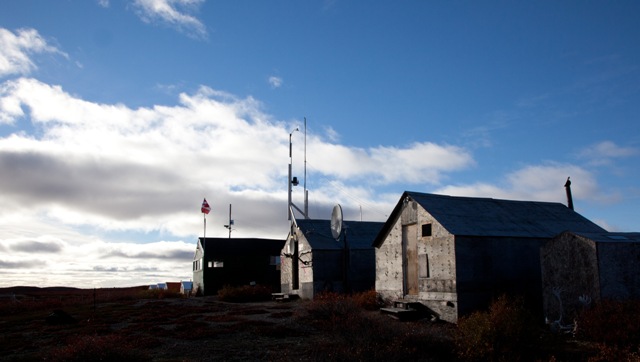In a market that has brought juniors and miners of every commodity to their knees, Patrick Evans is president and CEO of not one, but two high-flying diamond juniors.
“There is a ray of sunshine that’s coming down on us at the moment, which we’re very grateful for,” he said in a mid-October interview. “For special situations which are different for each of the companies, we’re experiencing unusual support in this market.”
In the case of Mountain Province Diamonds (TSX:MPV; NYSE-MKT: MDM), which owns 49% of the Gahcho Kué development project, 300 km northeast of Yellowknife, Evans lists those factors as: market recognition of Gahcho Kué as “the biggest and richest new diamond mine in the world,” the project’s recently concluded two-year environmental impact review (EIR), and the fact that the company’s majority partner and the project operator is diamond heavyweight De Beers — definitely a risk-mitigating factor.
Add to that list the project receiving federal approval from minister of aboriginal affairs and northern development Bernard Valcourt, in late October — a development that means the partners can now apply for the permits they need to begin construction.
In the case of Evans’ other company, Kennady Diamonds (TSXV: KDI), a spinoff of Mountain Province that owns 100% of a project adjacent to Gahcho Kué, it’s the “off the charts,” high-grade diamond results Kennady released in August that have garnered attention.
On the back of those results, the company recently managed to raise $14 million in a combination of flow-through and non-flow-through shares — well above the $5 million Evans initially hoped to raise.
Gahcho Kué EIR
If all continues to go well with permitting, Gahcho Kué could start production in 2015, becoming Canada’s fourth diamond mine (not including the failed Jericho mine in Nunavut).
Probable reserves, contained in three kimberlites — 5034, Hearne and Tuzo — stand at 31.3 million tonnes grading 1.57 carats per tonne for 49 million carats, enough to feed the operation for 11 years.
With federal approval in hand, the Mackenzie Valley Land and Water Board can now process the land use permits and water licences needed to begin construction.
The joint venture is also working on another important task: negotiating impact benefit agreements with the aboriginal communities that will be affected by the development.
In a report released in July, the Mackenzie Valley Environmental Impact Review Board Gahcho Kué Panel, which oversaw the EIR process, conceded that Gahcho Kué was “likely to cause significant adverse environmental impacts.” While it recommended that the development proceed, its approval was conditional on several measures that will reduce those impacts, particularly on caribou. It also recommended follow-up programs that will monitor impacts of the mine on all wildlife, as well as the socioeconomic effects of the mine.
Several aboriginal groups whose territory overlaps with the project feel those measures are not comprehensive or specific enough. Groups including the Tlicho, Lutsel K’e Dene and the Yellowknives Dene, wrote to the minister Valcourt ahead of his decision, asking him to send the EIR back to the Mackenzie Valley Land and Water Board for further review.
They argued that the mitigation measures proposed by the board were incomplete or non-binding, expressed concern about protection of caribou herds — which are already suffering low numbers — water quality, and the failure of the report to address cultural impacts of the mine.
However, Evans sees the written submissions as a bargaining chip in negotiations over impact benefit agreements (IBAs), and cautions that the permitting process is independent of the IBA negotiations.
De Beers and Mountain Province concluded their first IBA with the North Slave Metis Alliance in July, but are still in talks with five other aboriginal groups.
“I think it’s a mistake to assume from the public comments that have been made outside of the negotiating room that any of the aboriginal groups are opposed to the development of the mine,” Evans said, adding that all supported development at the end of the EIR process last December, and that they would not be negotiating agreements with the JV otherwise.
“They are not opposed to the development, they are negotiating hard for maximum benefits to themselves during these negotiations for the agreements.”
Separately, in late June, De Beers announced it had signed a socioeconomic agreement with the Northwest Territories government. The agreement includes commitments on employment, training, job opportunities and monitoring the socioeconomic impact of the development.
The partners are also working on construction logistics and an updated feasibility study, which will guide Mountain Province regarding the amount of money it will have to raise for its portion of development. The company currently has about $22 million in the bank, enough to see it through early 2014.
A 2010 feasibility study projected that the open-pit operation would produce 4.5 million carats per year over 11 years, and pegged the project’s net present value at US$277 million (US$135.9 million after sunk costs) and its internal rate of return at 33.9% (20.7% after sunk costs). The study forecast initial capital costs of US$549.5 million, working capital of US$49.4 million, and operating costs of US$48.68 per tonne.
Evans says he expects to raise about $400 million all told, through a $120-150 million rights offering, and around $250 million in debt.
The company’s largest shareholder, Bottin Investments, is likely to underwrite the rights offering (as it did a $47-million rights offering last November). Once that’s arranged, the funds should keep Mountain Province going for most of 2014, during which time it will finalize the debt component of the deal (talks are ongoing). Evans anticipates the company will start to draw down those funds in the second half of next year.
The company is considering offtake, royalty or streaming agreements — all of which have drawn interest and would reduce share dilution.
Further upside exists in resources at Gahcho Kué. This summer, indicated resources got a 12% boost and inferred resources an 80% boost with the inclusion of deeper portions of the Tuzo kimberlite, between 360 metres and 564 metres depth. Indicated resources now stand at 33.8 million tonnes grading 1.67 carats per tonne for 56.6 million carats, while inferred resources add 11.3 million tonnes averaging 1.64 carats for 18.5 million carats.
Mountain Province shares traded at $5.19 at presstime, in a 52-week range of $3.40-5.87. The company has 94.2 million shares outstanding.





Be the first to comment on "Mountain Province, Kennady, find ray of sunshine in gloomy market"